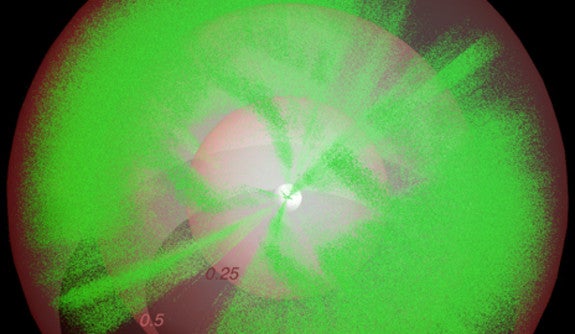Supercomputers help Yale astrophysicists interpret secrets of the universe

A series of papers released this week by the international scientific collaboration known as the Sloan Digital Sky Survey depended heavily on supercomputing performed by Yale astrophysicists.
The four papers — which shed new light on galaxy clustering, and the expansion, structure, and composition of the universe — involved the examination of nearly one million distant luminous, or bright, galaxies.
Nikhil Padmanabhan, an assistant professor of physics at Yale, and Antonio J. Cuesta, a postdoctoral student in his lab, used the BulldogM supercomputer in the Yale High Performance Computing Group to compare theoretical and observed patterns of galaxy clustering. This work helped narrow the number of theoretical models likely to describe clustering, and contributed to findings in all four papers in the series.
The results were presented Jan. 11 at the American Astronomical Society’s winter meeting in Austin.
“These studies allow us to look back six billion years, close to a time when the universe was only half as old as it is now,” Cuesta said of the research results, which have been published on the arXiv preprint server and submitted to Astrophysical Journal.
The SDSS-III Collaboration is mapping the Milky Way, searching for extrasolar planets and investigating the nature of dark energy. The collaboration, which involves researchers from Yale and dozens of other major research institutions around the world, began gathering data in 2008 and will continue through 2014 using equipment at the Apache Point Observatory in New Mexico.
For more information on the collaboration’s latest results, see the detailed overview on its website.
Media Contact
Eric Gershon: eric.gershon@yale.edu,